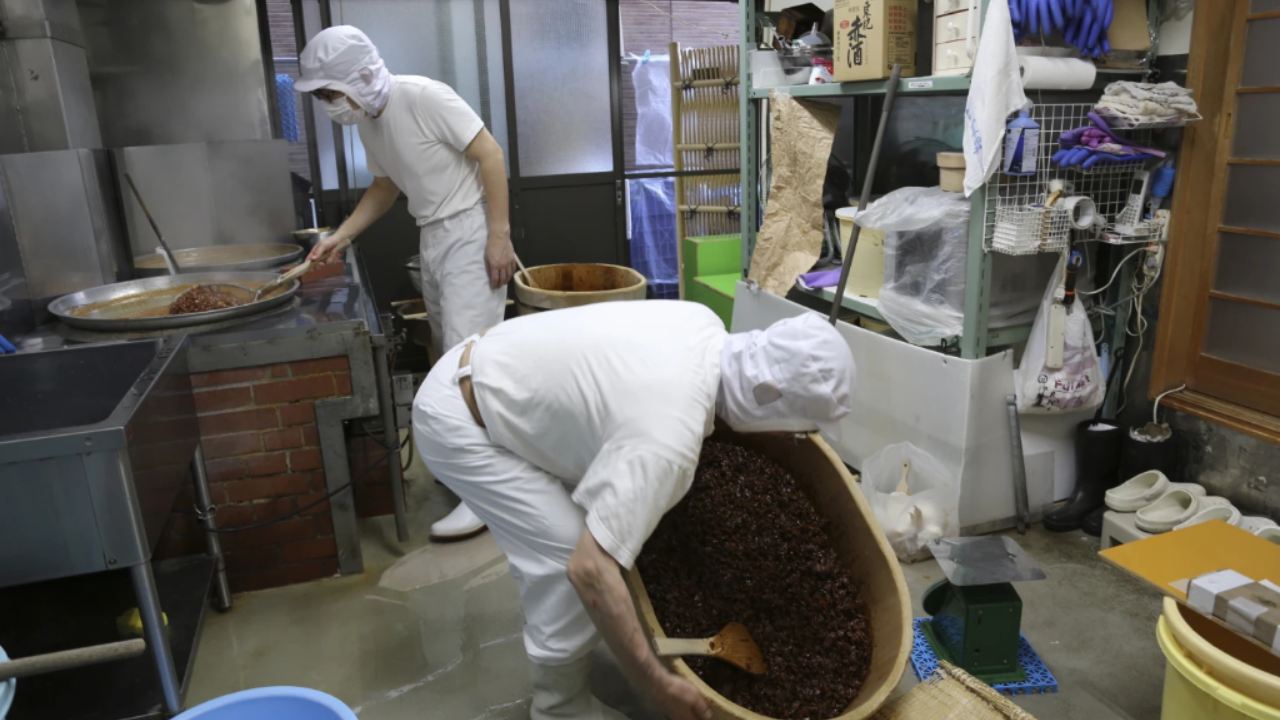
©(AP Photo/Yuri Kageyama)
Vocabulary:
I will read the words, meanings, and sample sentences. Then, repeat after me.
- blend /blend/
- seasoning /SEE-zuh-ning/
- vat /vat/
- modernization /mod-er-nahy-ZEY-shuhn/
- long-standing /long-STAN-ding/
[noun] – a mixture of different things
The chef created a special blend of herbs for the new pasta dish.
[noun] – a spice or flavoring added to food
The soup tasted better after she added some seasonings like pepper and garlic.
[noun] – a large container used for storing or cooking liquids
Large vats of soup were prepared for the festival.
[noun] – the process of making something more modern or up to date
Some towns worry that modernization will harm their historical identity.
[adjective] – existing or continuing for a long time
The school has a long-standing tradition of hosting cultural events every spring.
Article reading:
Please read the whole article. Then, I will check your pronunciation and intonation.
Production of tsukudani, a traditional Japanese preserved dish, continues in the Tsukuda district of Tokyo, where the food originated more than 200 years ago. At Tsukushin, a factory-turned-shop, father and son Nobuo and Yoshihiro Kobayashi begin their day at 5 a.m., preparing ingredients such as tuna, shrimp, seaweed, and clams. The ingredients are gently cooked in a sweet and salty blend of traditional seasonings, using a method that dates back to the Edo era, long before modern cooling technology became available. Although modern factories mass-produce tsukudani, the Kobayashi family maintains a manual, small-batch process using gas-heated vats and wooden trays. This traditional method highlights the preservation of culinary practices in the face of rapid modernization.
The cooking process is meticulous and requires limited stirring to avoid damaging the delicate components. According to Yoshihiro Kobayashi, tsukudani is somewhat comparable to jam in terms of flavor concentration and usage. The dish is typically eaten with steamed rice and may also accompany miso-based soup or be added to chazuke, a simple meal where hot tea is poured over rice. The dish also serves as a convenient filling for rice-based meals and is frequently included in packed lunches. While newer versions such as tsukudani-flavored snacks have appeared, producers emphasize that traditional preparation and consumption are essential for maintaining authenticity. The continued presence of shops like Tsukushin illustrates the cultural value of small businesses in sustaining Japan’s long-standing food traditions.
The cooking process is meticulous and requires limited stirring to avoid damaging the delicate components. According to Yoshihiro Kobayashi, tsukudani is somewhat comparable to jam in terms of flavor concentration and usage. The dish is typically eaten with steamed rice and may also accompany miso-based soup or be added to chazuke, a simple meal where hot tea is poured over rice. The dish also serves as a convenient filling for rice-based meals and is frequently included in packed lunches. While newer versions such as tsukudani-flavored snacks have appeared, producers emphasize that traditional preparation and consumption are essential for maintaining authenticity. The continued presence of shops like Tsukushin illustrates the cultural value of small businesses in sustaining Japan’s long-standing food traditions.
Discussion Questions:
I will read each question. Then, please answer them.
- Have you ever eaten preserved or traditional food in your hometown? If so, what was it, and did you like it? If not, is there a food you would like to try from your culture’s past?
- Have you ever helped cook a dish using an old or family recipe? If so, what was the recipe, and who taught you? If not, would you like to try learning a traditional recipe? Why or why not?
- Do you agree that traditional cooking methods are important to protect culture?
- Why do you think some families continue to use old cooking methods even when faster machines exist?
- How can younger generations learn to appreciate traditional foods in a modern world?
Summarization
Please summarize the whole article using your own words and expressions. You will have one minute to prepare before you answer.
Describe:
Please explain the definition of each word listed below based on your understanding. You can provide example sentences if needed.
- dish
- tuna
- shrimp
- modern
- preparation